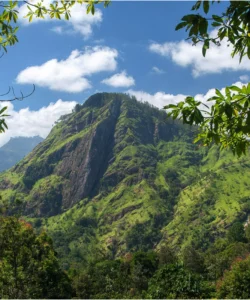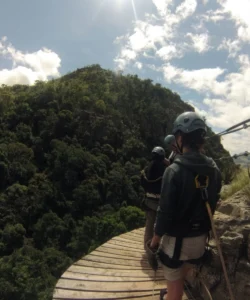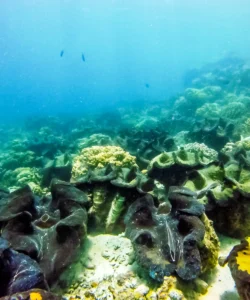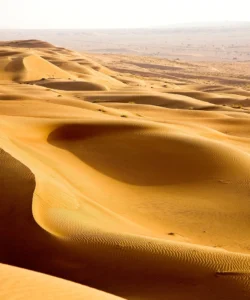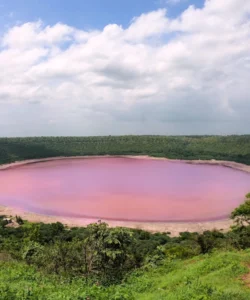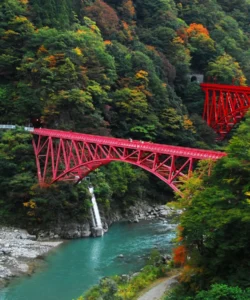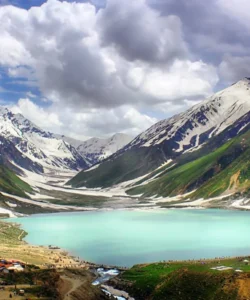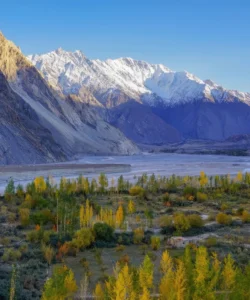Mount Fuji (富士山, Fujisan), Japan’s tallest peak, is an active stratovolcano that has become a global symbol of the nation. Revered for centuries, its near-perfectly symmetrical cone is a sacred site in the Shinto religion and a profound source of artistic inspiration that has been immortalized in countless paintings, poems, and photographs. In 2013, it was recognized as a UNESCO World Heritage Site under the title “Fujisan, sacred place and source of artistic inspiration.” More than just a mountain, it is a cultural and spiritual icon that represents the beauty and power of nature in the Japanese psyche.
![]()
Name and Address
- Name: Mount Fuji (or Fujisan).
- Address: Located on the border of Shizuoka and Yamanashi Prefectures, on the island of Honshu, Japan. It is approximately 100 kilometers (62 miles) southwest of Tokyo.
How to Get There
Mount Fuji is a major destination, and there are several well-established ways to reach its slopes and the surrounding Fuji Five Lakes region from Tokyo.
- By Bus: This is often the most direct and popular method, especially during the climbing season. Direct highway buses run from the Shinjuku Expressway Bus Terminal in Tokyo to the Fuji-Subaru Line 5th Station (the most popular trailhead for climbing). The journey takes about 2.5 hours. Buses also run from Tokyo Station and Shibuya Station to the Fuji Five Lakes area, particularly Lake Kawaguchiko.
- By Train: While not as direct as the bus, trains offer a scenic journey. From Shinjuku Station in Tokyo, take the JR Chuo Line to Otsuki Station, then transfer to the Fujikyu Railway Line to reach the Fuji Five Lakes area (e.g., Kawaguchiko Station). The Limited Express “Fuji Excursion” train offers a direct service from Shinjuku to Kawaguchiko.
- By Car: Renting a car provides the most flexibility for exploring the entire region at your own pace. The drive from Tokyo takes approximately 2-3 hours, depending on traffic. Note that private cars are restricted from driving up to the 5th stations during the official climbing season.
Landscape and Architecture
The “architecture” of Mount Fuji is its magnificent natural form, a result of millennia of volcanic activity.
- Geological Formation: Mount Fuji is a classic stratovolcano, formed by repeated eruptions that have built up layers of lava, ash, and rock. The present-day, near-perfect cone is known as “Shin-Fuji” (New Fuji), which formed over an older volcano, “Ko-Fuji” (Old Fuji). Though its last eruption was in 1707, it is still classified as an active volcano.
- The Summit Crater: The summit features a large crater, which is about 780 meters (2,560 feet) in diameter. A sacred walk around the crater rim, known as Ohachimeguri, is a popular activity for climbers who reach the top.
- The Fuji Five Lakes (Fujigoko): The mountain’s landscape is famously complemented by the Fuji Five Lakes, which were formed by lava flows damming up rivers. Located at the northern base of the mountain, these lakes—Kawaguchiko, Motosuko, Saiko, Shojiko, and Yamanakako—offer some of the most iconic and picturesque views of Mount Fuji, often with its reflection captured in the water.
- Aokigahara Forest: At the northwestern base lies Aokigahara, also known as the “Sea of Trees.” This dense, unique forest grew on a massive lava flow from an eruption in 864 AD and contains several lava caves, such as the Narusawa Ice Cave and Fugaku Wind Cave.
What Makes It Famous
Mount Fuji’s fame is multifaceted, stemming from its visual beauty, cultural significance, and its status as a pilgrimage site.
- Iconic and Symmetrical Cone: Its near-perfect volcanic cone, often capped with snow, is instantly recognizable and is one of the most iconic natural landmarks in the world.
- Sacred Mountain and Pilgrimage Site: Mount Fuji is one of Japan’s three holy mountains. Climbing it has been a religious pilgrimage for centuries. Shrines, such as the Fujisan Hongū Sengen Taisha, are located at its base and summit, dedicated to the mountain’s deity.
- Source of Artistic Inspiration: The mountain has been a central subject in Japanese art for centuries, most famously in the ukiyo-e woodblock prints of Hokusai’s Thirty-six Views of Mount Fuji and Hiroshige’s works. This artistic legacy was a key reason for its UNESCO World Heritage designation.
- Climbing Experience: During the official climbing season (early July to mid-September), hundreds of thousands of people climb Mount Fuji. The experience of hiking through the night to witness the sunrise (goraikō) from the summit is a deeply cherished goal for many Japanese people and international tourists.
Differences from Other Wonders
Mount Fuji is distinct from other famous mountains and volcanoes due to its unique combination of natural form and deep cultural integration.
- Cultural Icon vs. Purely Natural Wonder: While many mountains are famous for their height or climbing difficulty (like Mount Everest), Mount Fuji’s global fame is equally, if not more, tied to its role as a cultural and spiritual symbol of a nation. It is an artistic muse and a sacred place, not just a geological feature.
- Near-Perfect Symmetry: Its exceptionally symmetrical cone is a rare geological feature that sets it apart from the more rugged and irregular shapes of many other famous mountain ranges, like the Alps or the Himalayas.
- Accessibility and Popularity: Despite its height, Mount Fuji is remarkably accessible from a major metropolis like Tokyo, and its trails are well-developed with mountain huts. This makes the pilgrimage of climbing it achievable for a vast number of ordinary people, unlike more technical and dangerous high-altitude peaks.
- Solitary Stature: Unlike mountains that are part of a large range, Mount Fuji stands alone, rising dramatically from the surrounding plains and lakes. This isolation enhances its visual dominance and iconic status.


